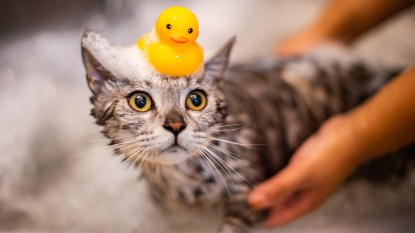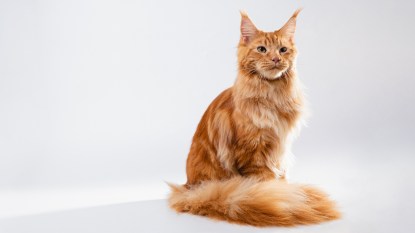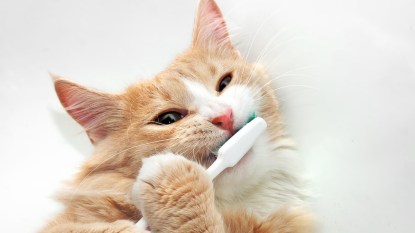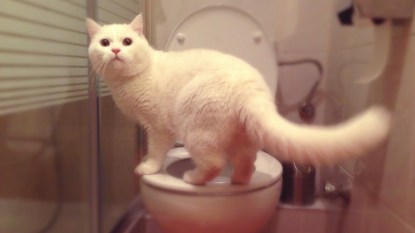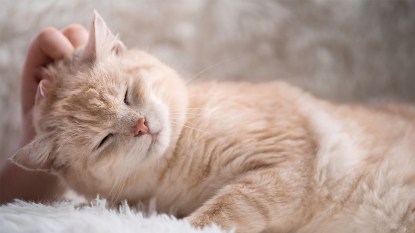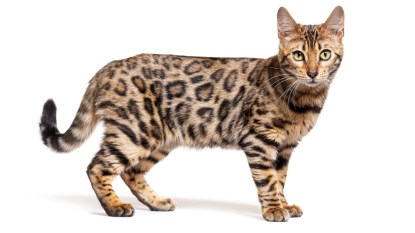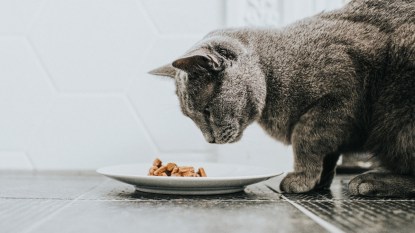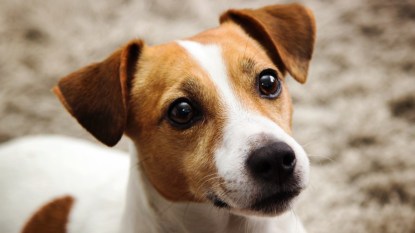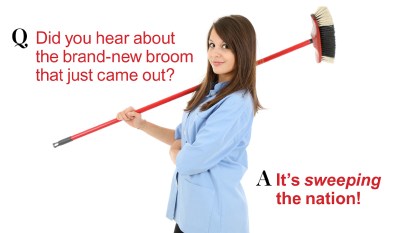Do Dogs Get Jealous of New Romantic Partners? Yes — And Here’s How To Avoid It
Avoid tension between your pup and partner using these tips.
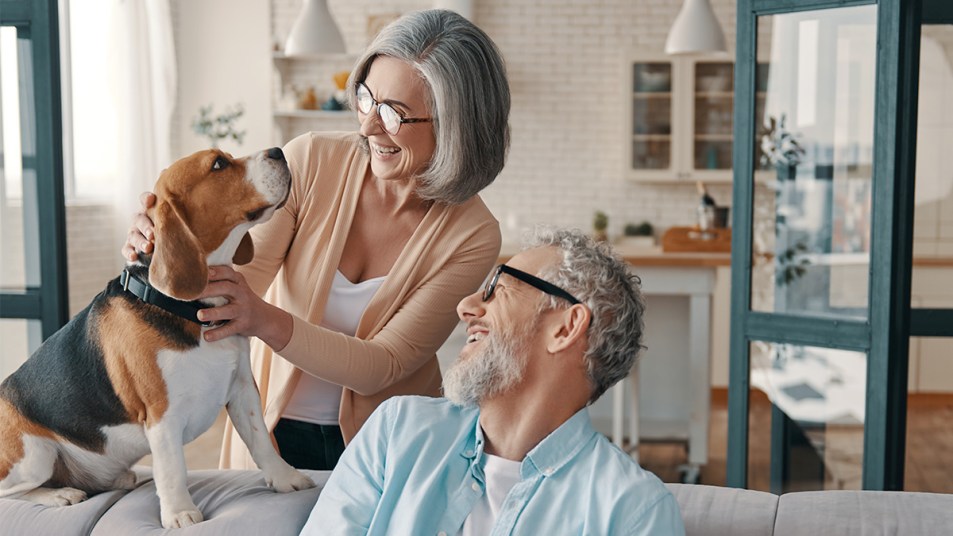
When introducing family members to your significant other, you want things to go as smoothly as possible — it’s a big moment, after all. And it’s not only your human family that you need to worry about. Pets can’t articulate their thoughts in quite the same way as we do, but they certainly have opinions. Dogs in particular can get envious when a new romantic partner comes into your life, and may act out because of it. The reason? They’re getting to know your partner, and they’re not used to sharing you with someone else. But don’t worry: Recognizing the signs of a jealous dog will start you on the path toward creating a healthy dynamic between Fido and your significant other. Keep reading to learn tips from animal experts on how to spot and avoid your pup’s jealousy — so everyone can be happy and comfortable under the same roof.
Why do dogs get upset over a new romantic partner?
Your dog is used to having you all to themselves and an established routine. When someone else comes into the picture, your fur baby will understandably be affected by this change. Annie Bourke, animal conversationalist, medium, and author of The Bridge To Animal Consciousness (Buy from Amazon, $16.95) describes the driving factors behind dogs being upset over your new partner.
“Our animals don’t understand why you are spending so much time with another human instead of them — the animals were with you first and they feel they should have priority,” she explains to Woman’s World. “They can be upset when their routines change, like if they’re no longer allowed on the bed, or if play time and time for walks gets reduced.” The good news is, spotting the signs of a jealous dog is easier than you think.
What are the signs of a jealous dog?
Because your dog initially views your significant other as a stranger, they’ll exhibit certain behaviors in order to protect you. These actions are called guarding behaviors and can range from mild to full-blown aggression. Here’s a list of common guarding behaviors to look out from Dr. Corinne Wigfall, BVMBVS (Hons) BVMedSci (Hons), registered veterinarian and veterinary spokesperson for SpiritDog Training:
- Growling
- Teeth-baring
- Hackles raising
- Physically blocking space between you and your partner
- Barking
- Nipping
- Biting
- Staring intently at your partner
These behaviors are clear indications that your pup doesn’t want to interact with your partner. Therefore, you shouldn’t force them to, as it could further agitate them. This approach speaks to dogs’ innate territorial nature, which contrasts with cats’ personality-driven response to strangers. “Some [cats] will be interested and want to say hello — these cats will often vocalize when walking up to you, make eye contact, and brush against you,” Dr. Wigfall says to Woman’s World. “Other cats can be more timid and run away, so these cats are best left alone.”
As a dog parent, keeping your furry pal joyful is a top priority. Thankfully, there are some ways to ensure that Spot stays calm and collected as they’re adjusting to your significant other. Read them below.
How do I prevent my dog from becoming jealous of my partner?
Just like humans, dogs need time to get to know someone before fully warming up to them. To help, Ellen Russell, DVM, MPH, veterinarian at The Malamute Mom, shares a five-step process for establishing a relationship between your partner and pup:
- Start slow. Introduce your dog to your significant other gradually and let your dog set the pace. Allow your dog to become familiar with your partner’s scent and presence before introducing more physical contact.
- Let the dog approach first. Don’t force your pup into an uncomfortable situation; instead, let him or her come up on their own terms. That way, your pup can get comfortable with the new visitor in their own time. Rushing the process could lead to fear or aggression.
- Provide reassurance. You have to let your pup know that everything is okay. Talk to your pup in a soothing voice, and provide plenty of positive reinforcement when they interact with your significant other. When you show your pup that you are comfortable, they will be too.
- Give treats. As a reward for good behavior, offer some small treats when your pup and significant other interact. This will help them associate the new person with something positive, making them more likely to approach them in the future.
- Gradually include your significant other in activities. Once your pup is comfortable with the new person, gradually include them in activities like walks or playtime. This will help reinforce their relationship and let your pup know that it’s okay to be around them.
The Bottom Line
While it might’ve been love at first sight for you and your partner, your dog may still give them the cold shoulder at first. And that’s okay: Give the pup time to become familiar with your significant other and they’ll come around eventually. It’s the least you can do, considering that dogs provide us with unconditional love and companionship — a great example to follow in your relationships with people!


